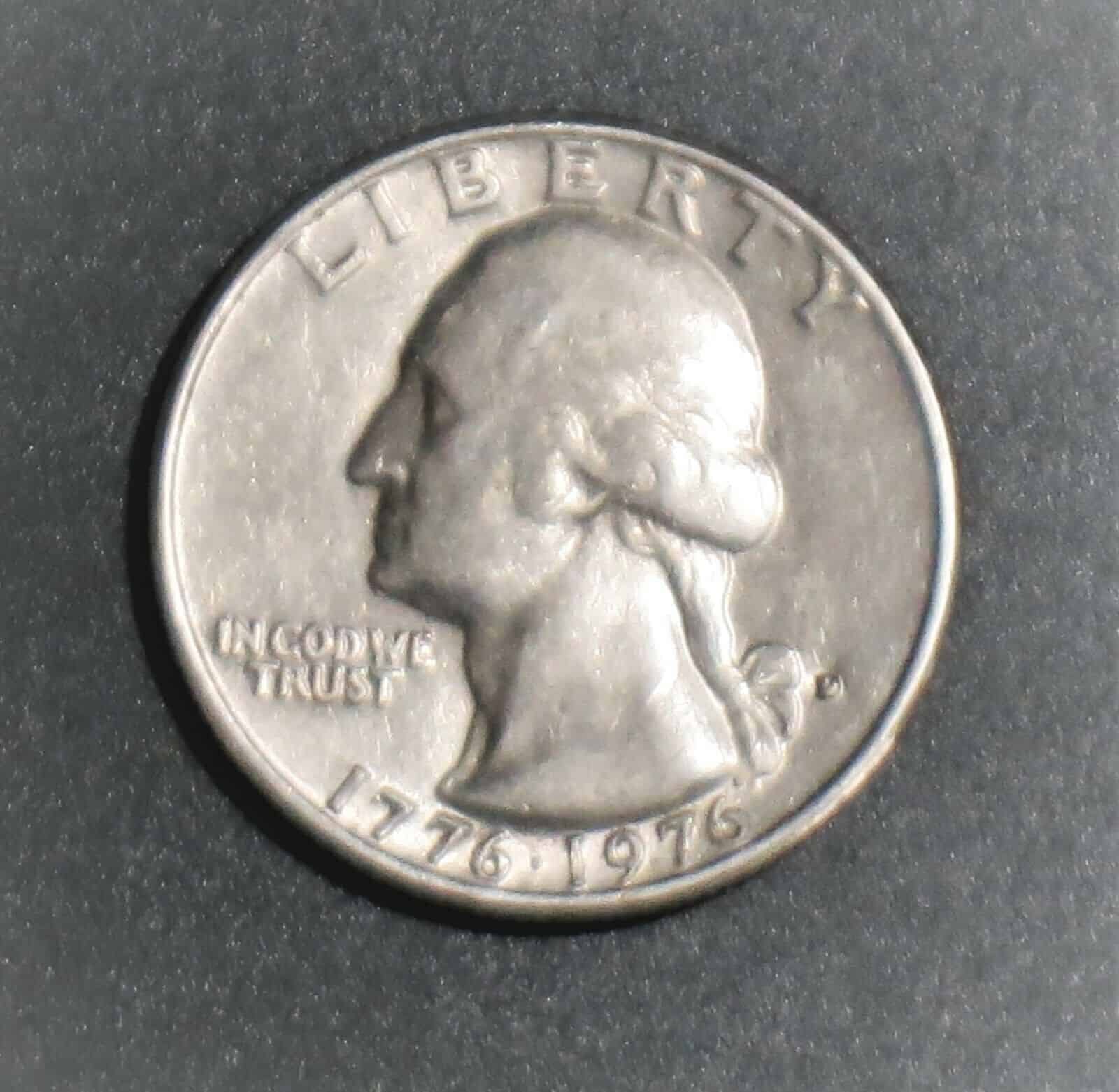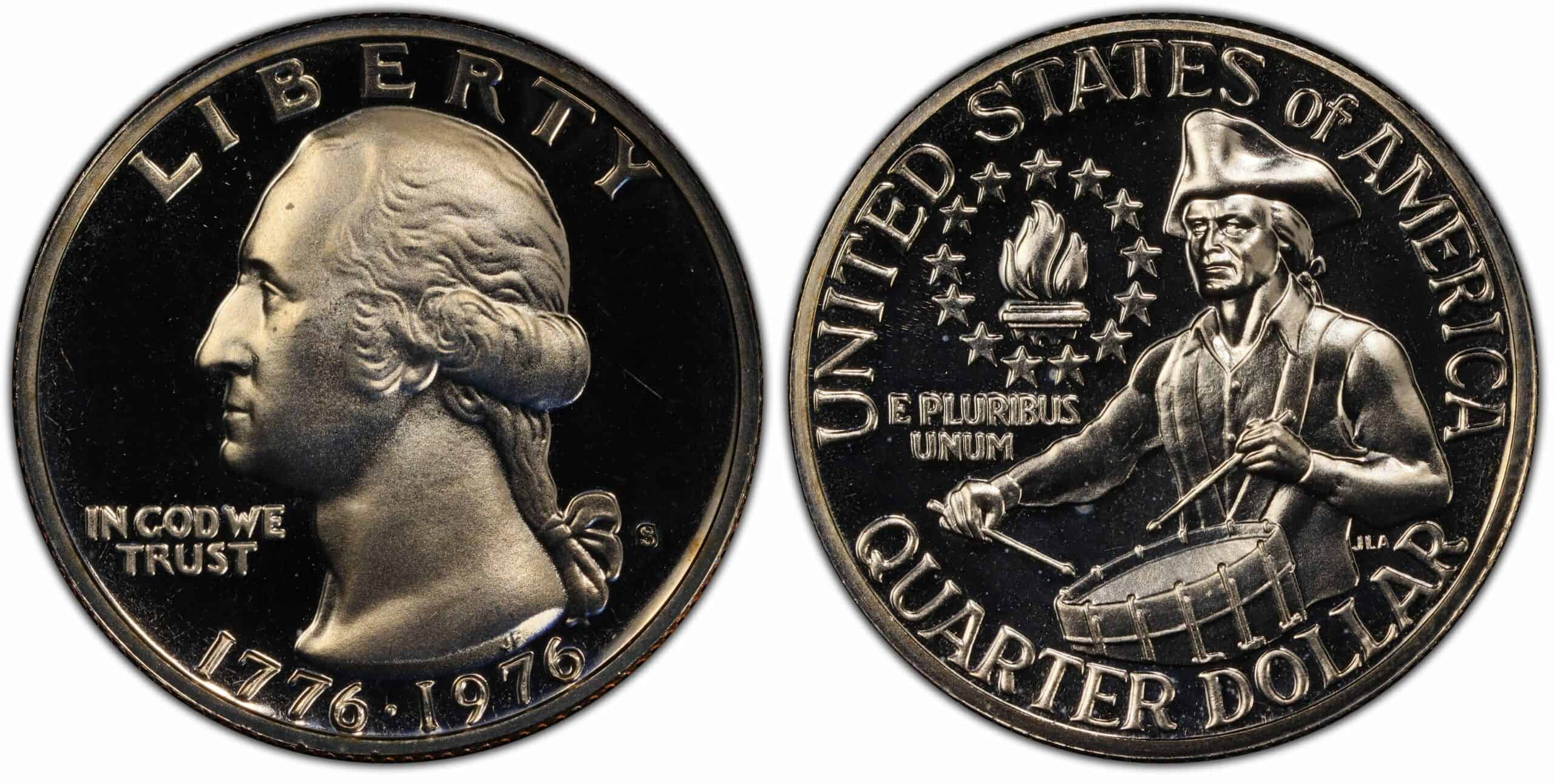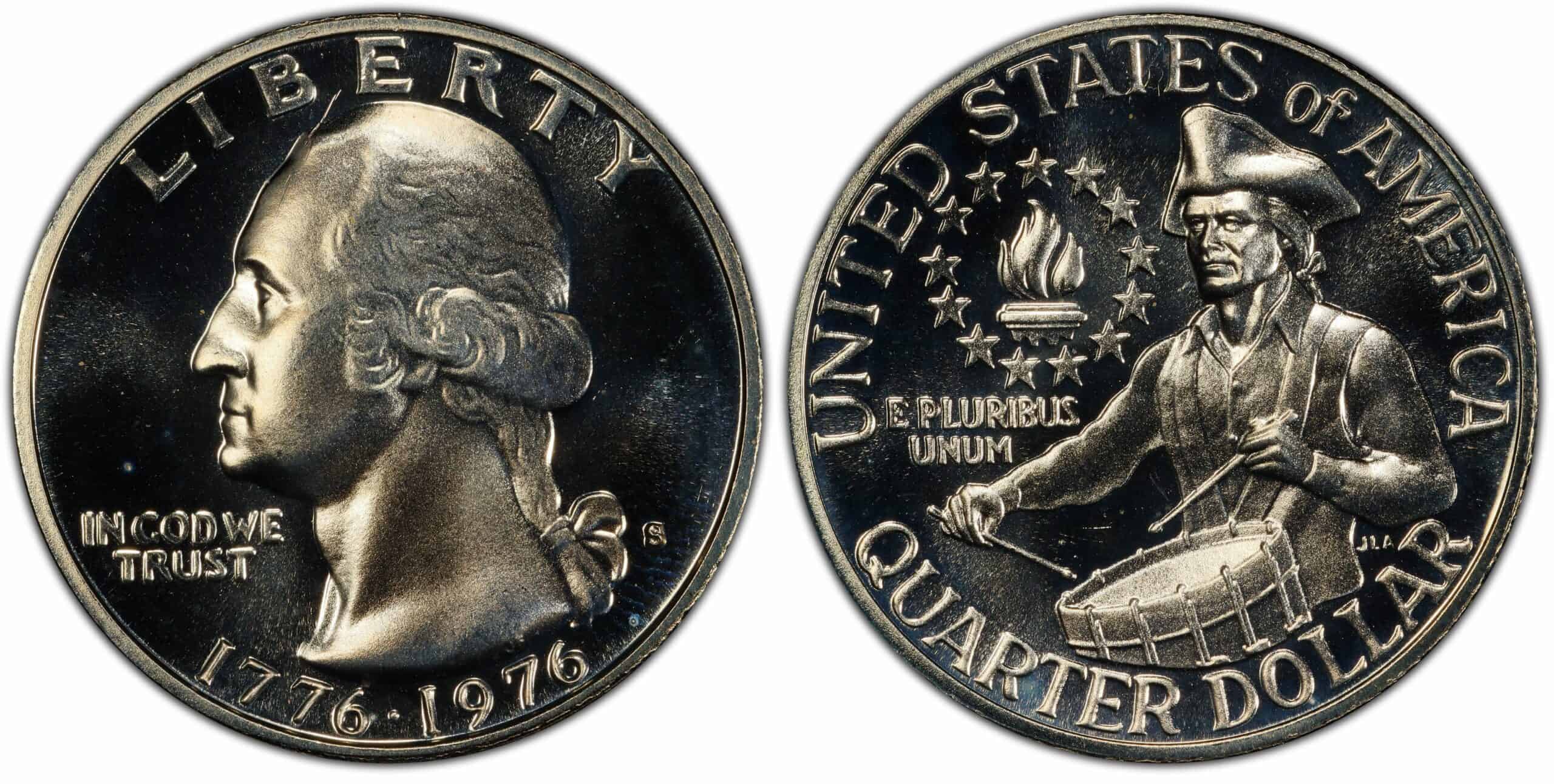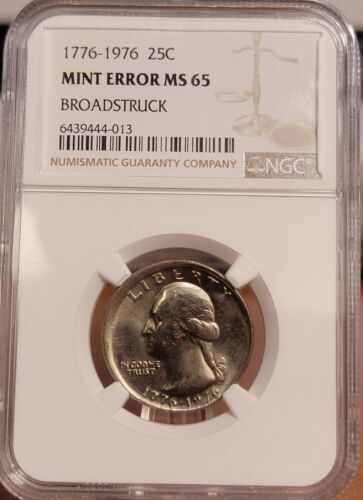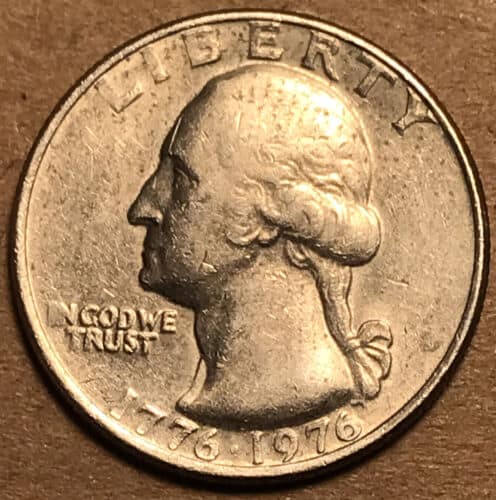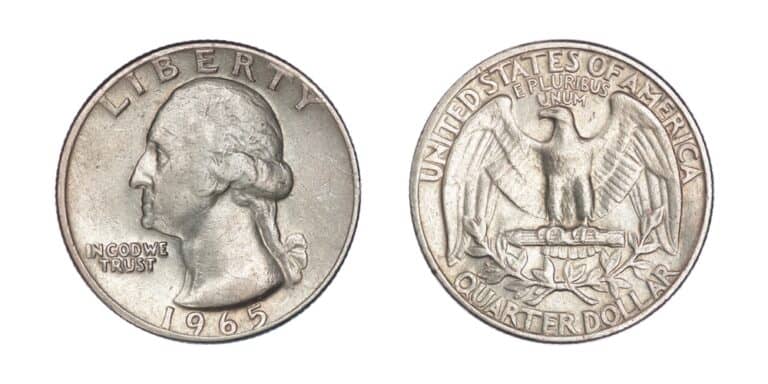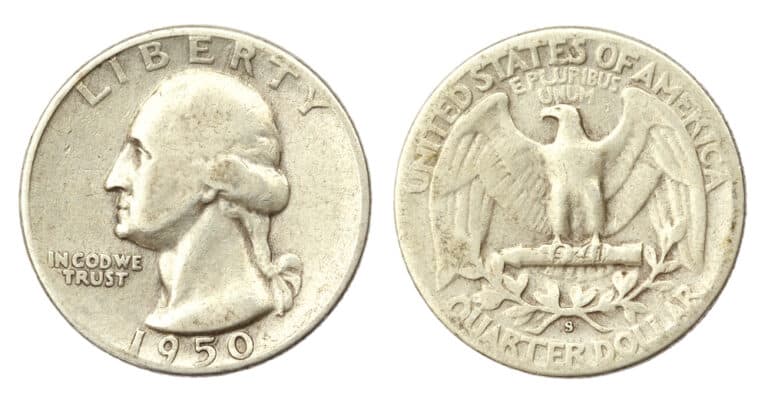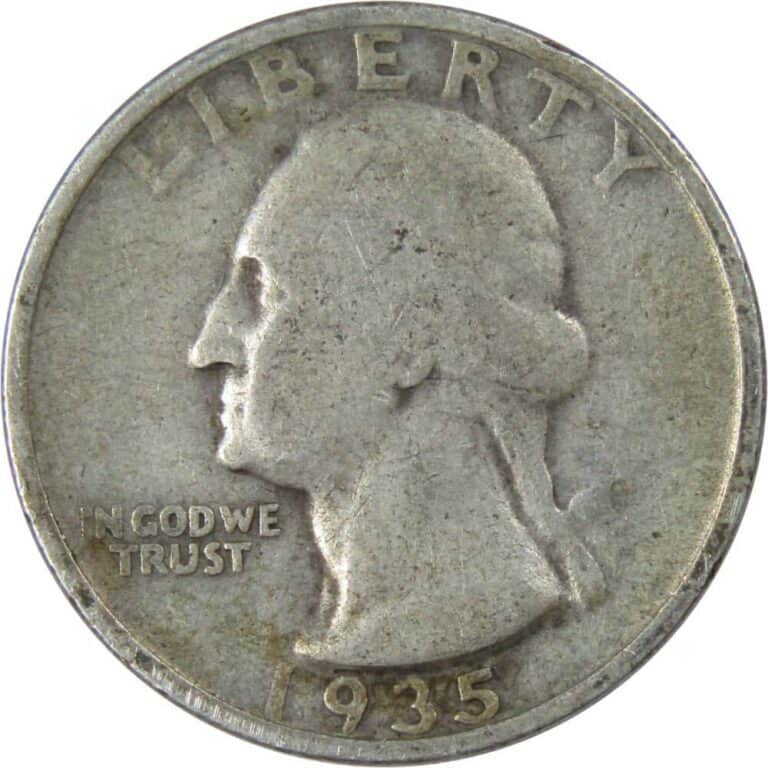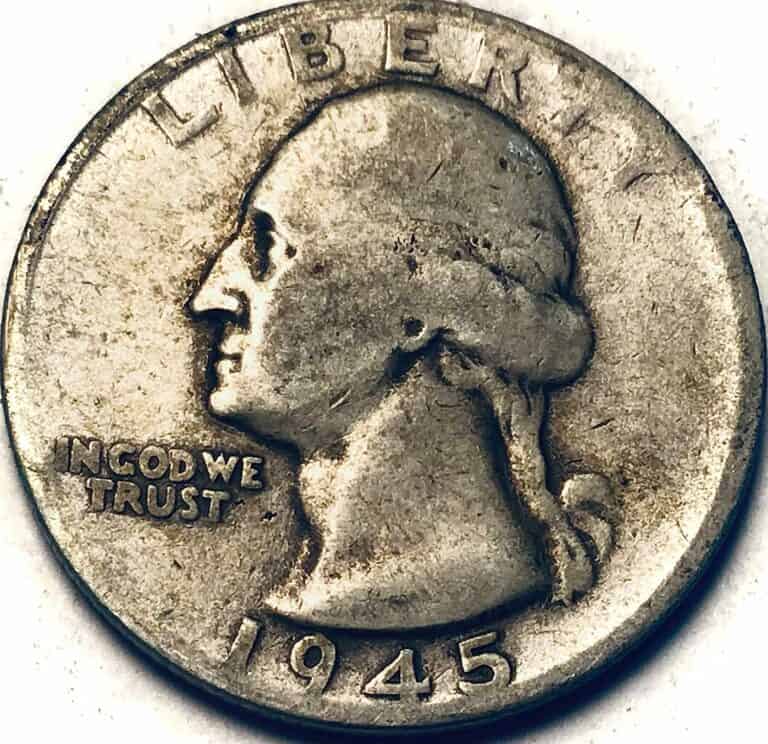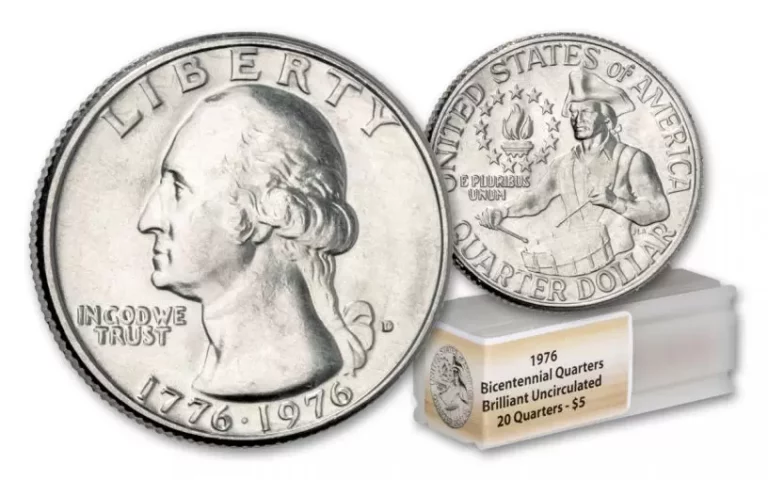1776 Quarter Value: How Much Is It Worth Today?
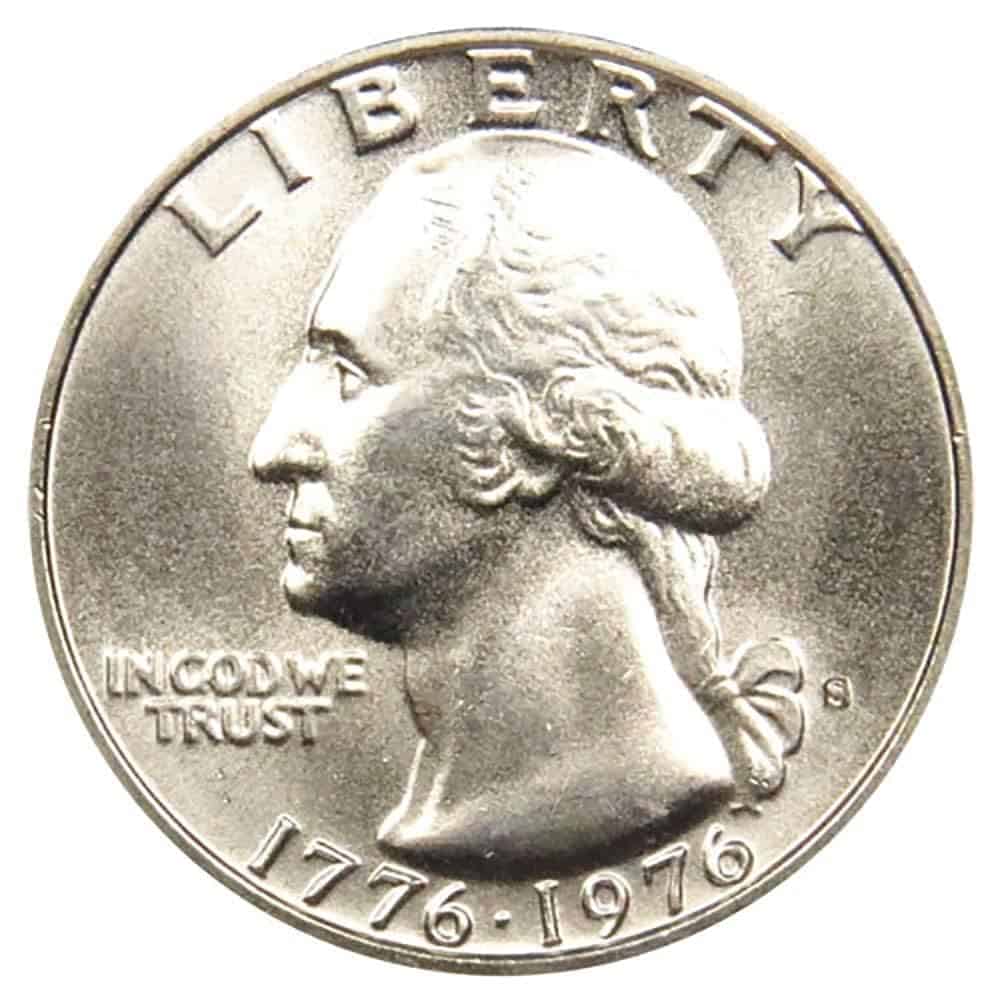
The 1776 quarter value piques the interest of many collectors. Popularly known as the 1976 quarter or the 1776 to 1976 quarter, this coin is one of a few that have two dates. As such, it’s easy to just assume that this is enough to make it valuable.
Fortunately, we have done the necessary research for you and are ready to share our findings here. In today’s post, we are going to talk about this coin’s history, features, current price, and the factors that affect its price.
1776 Quarter Value Chart |
||||
| Type | MS63 | MS66 | MS68 | PR69 |
| 1776 Clad No Mint Mark (P) Quarter Value | $4 | $44 | $4,250 | _ |
| 1776 Clad D Quarter Value | $4 | $55 | $4,350 | _ |
| 1776 Clad S Quarter Value | _ | _ | _ | $15 |
| 1776 Silver S Quarter Value | $6 | $16 | $95 | $10 |
1776 Clad No Mint Mark (P) Quarter Value
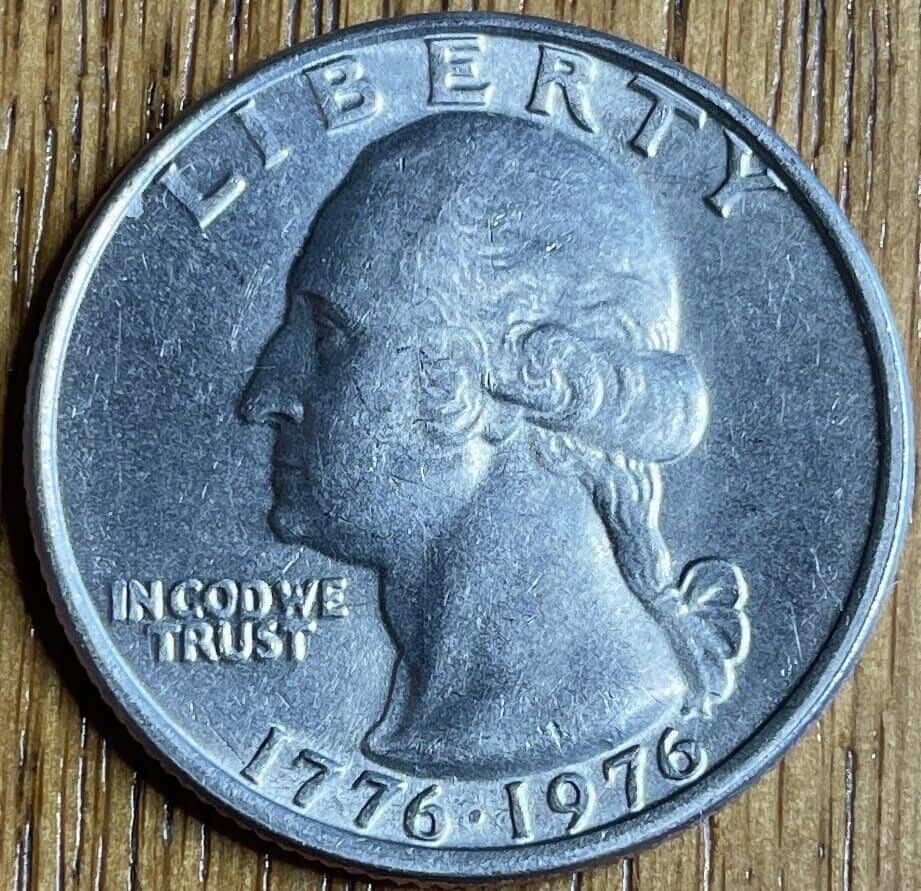
1776 quarters are part of the Washington quarter series. This series was launched in 1932 and has been minted every year to date apart from 1933. It gets its name from the fact that all its coins bear George Washington’s image on their obverse.
This image shows his left-facing head with the words “IN GOD WE TRUST” below his chin.
Above his head, the legend “LIBERTY” appears along the top rim. Another legend indicating the date of the coin appears below his neck cut-off, along the coin’s bottom rim.
In the 1776 quarter, two dates appear: 1776 and 1976. A dot separates them. For coins minted in San Francisco and Denver, there’s also a mint mark behind Washinton’s head. It’s an S mark for the former and a D mark for the latter.
This simple design was the work of sculptor John Flanagan. He also designed the coin’s original reverse design that was used from 1932 to 1974 and then again from 1977 to 1998.
This design features the image of an eagle with outstretched wings placed at the center of the coin. It also has the legends “UNITED STATES OF AMERICA” and “QUARTER DOLLAR” along its top and bottom rims respectively.
But the Bicentennial design has a more celebratory feel to it. It features a colonial soldier using both his hands to beat a drum. To his left, there’s a ring of 13 stars with a victory torch at its center.
These stars represent the first 13 states of the United States. Under the ring of stars, the words “E PLURIBUS UNUM” are written. Along the coin’s rim, there are two groups of words, one at the top and another at the bottom.
The former says “UNITED STATES OF AMERICA” while the latter says “QUARTER DOLLAR”. This reverse design was the work of a sculptor called Jack L Ahr.
The Philadelphia mint produced around 809 million quarters bearing this design. They were round coins with reeded edges and a diameter of 24.3 mm. Also, they were regular strike coins that had no mint mark.
More importantly, they had a composition of 91.67% copper and 8.33% nickel. To make these, the mint coated a copper core with a mixture of 25% nickel and 75% copper. This gives the resulting coin a mass of 5.67 grams.
These coins are still readily available today. Numismatic experts estimate that over 300 million of them still exist across all grades, with 90 million having a grade of MS60 or better.
Around 18 million are estimated to have a grade of MS65 or better.
This contributes to their low value today. You’ll usually find an MS60 sample selling for as little as $4. If you want to make $100 and above, you’ll have to find one that has a grade of at least MS67.
1776 Clad D Quarter Value
The Denver mint produced around 860 million 1776 quarters. These had the same size, shape, mass, and type (regular strike) as the Philadelphia ones. The only difference was that they had a D mint mark.
Due to their high mintage, experts estimate that around 258 million of these coins still exist across all grades. A little over 77 million of these are estimated to have a grade of MS60 or higher, 15 million of which have a grade of MS65 or higher.
This has made them readily available and cheap. It’s therefore not surprising that an MS63 sample can sell for as little as $4 while an MS67 goes for a little over $100.
As with the Philadelphia coins, only Denver samples with an MS68 or better can go for thousands of dollars. However, there are two 1776 D quarter varieties that are rare and valuable.
These have a Double Die Obverse (DDO) error. The two designations these varieties have been given are FS101 and FS102. The former usually exhibit doubling on the coin’s obverse. The doubling is strong on letters of the inscription “LIBERTY”.
It also appears on other design elements like the date and the motto “IN GOD WE TRUST”. But this is weaker and therefore more difficult to see. On the other hand, the FS102 designation only shows doubling on the word “LIBERTY”.
Because of this, 1776 D quarters in the DDO FS101 variety are more expensive and more in demand than their FS102 counterparts. The former sells for hundreds of dollars even in circulated condition.
It’s therefore not surprising that an MS60 1776 quarter with an FS101 DDO can sell for $725 while an MS65 one can sell for $3,250.
On the other hand, an MS60 1776 quarter with an FS102 DDO can sell for $25 while an MS66 usually goes for around $200.
1776 Clad S Quarter Value
The San Francisco mint produced around 7 million 1776 quarters with the same composition as those produced in Philadelphia and Denver. These were proof coins that had an S mint mark.
Because of their high mintage, these coins are still readily available at cheap prices. You can buy a PR69 at only $15. However, those with a Cameo or Deep Cameo finish will usually cost a bit more.
1776 Silver S Quarter Value
Apart from the usual 1776 Clad S quarters, the San Francisco mint also produced around 15 million silver quarters. Around 4 million of these were proof. But they all had an S mint mark and were made of 40% silver and 60% copper.
These were special coins that were minted to be sold to collectors. This was the first time that the mint used silver for quarters since the 1965 decision to start using copper and nickel.
This decision was the result of rising silver prices and hoarding of coins by the public. Before this, the mint had consistently used an alloy with 90% silver and 10%, creating a coin with a mass of 6.25 grams.
Keep in mind though; the mint still produces special silver proof quarters for collectors. This has been happening since 1992. Whatever the case, silver quarters from decades ago are still available today, even 1776 quarters.
Experts even estimate that over one million regular-strike 1776 silver S quarters still exist today in all grades. It’s even estimated that over 350,000 of these have a grade of MS60 or better and 73,500 of these have a grade of MS65 or better.
Because of this, these quarters are affordable. A MS63 will usually cost you only $6 while a MS68 will sell for $95. However, a MS69 sample usually goes for thousands of dollars. One even sold for $19,200 at an auction in 2019.
1776 silver S proof quarters are also readily available today, even in Cameo and Deep Cameo condition. As such, you can get a Deep Cameo PR68 sample for only $18 and a PR70 one for $180.
1776 Quarter Grading
Grading 1776 quarters usually takes training and expertise. As such, it’s usually left to professional agencies like PCGS and NGC. Since getting these experts to grade your coins requires paying a fee, it’s only worth it for those in pristine condition.
Rare 1776 Quarter Error Lists
1776 Quarter Struck on Wrong Planchet
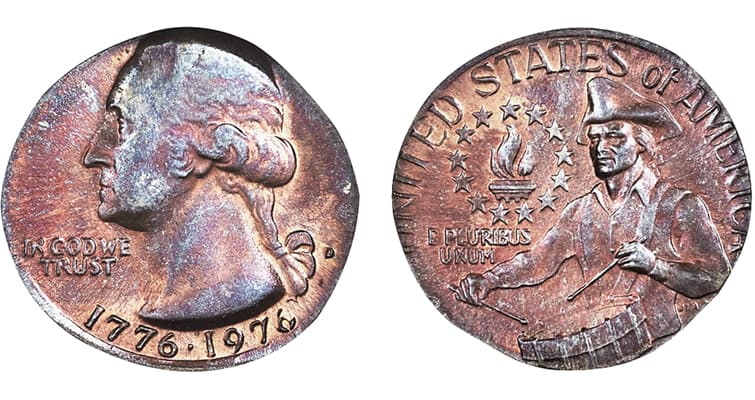
When a quarter is struck on the wrong planchet, it ends us with a different composition, mass, and size to other quarters. That’s why its design will often not fit well on the planchet.
This commonly happens when a quarter is struck on a dime, penny, or nickel. Either way, this error usually makes a coin more valuable. For instance, a PCGS MS62 1776 quarter struck on a 1976 dime can sell for $9,000.
On the other hand, a PCGS MS65 1776 D Clad quarter that’s been struck on a 5 cent planchet can sell for $2,640. When a similar coin with a grade of AU58 is struck on a cent planchet, it can sell for $2,400.
Interestingly, one of the most common wrong planchet errors are struck on cent planchets. As such, these are usually not as valuable as other wrong planchet errors.
Ultimately, the only reason that the above mentioned struck on cent quarter can sell for over $2,000 is the fact that the quarter was a Bicentennial one.
1776 Quarter Struck Off-center
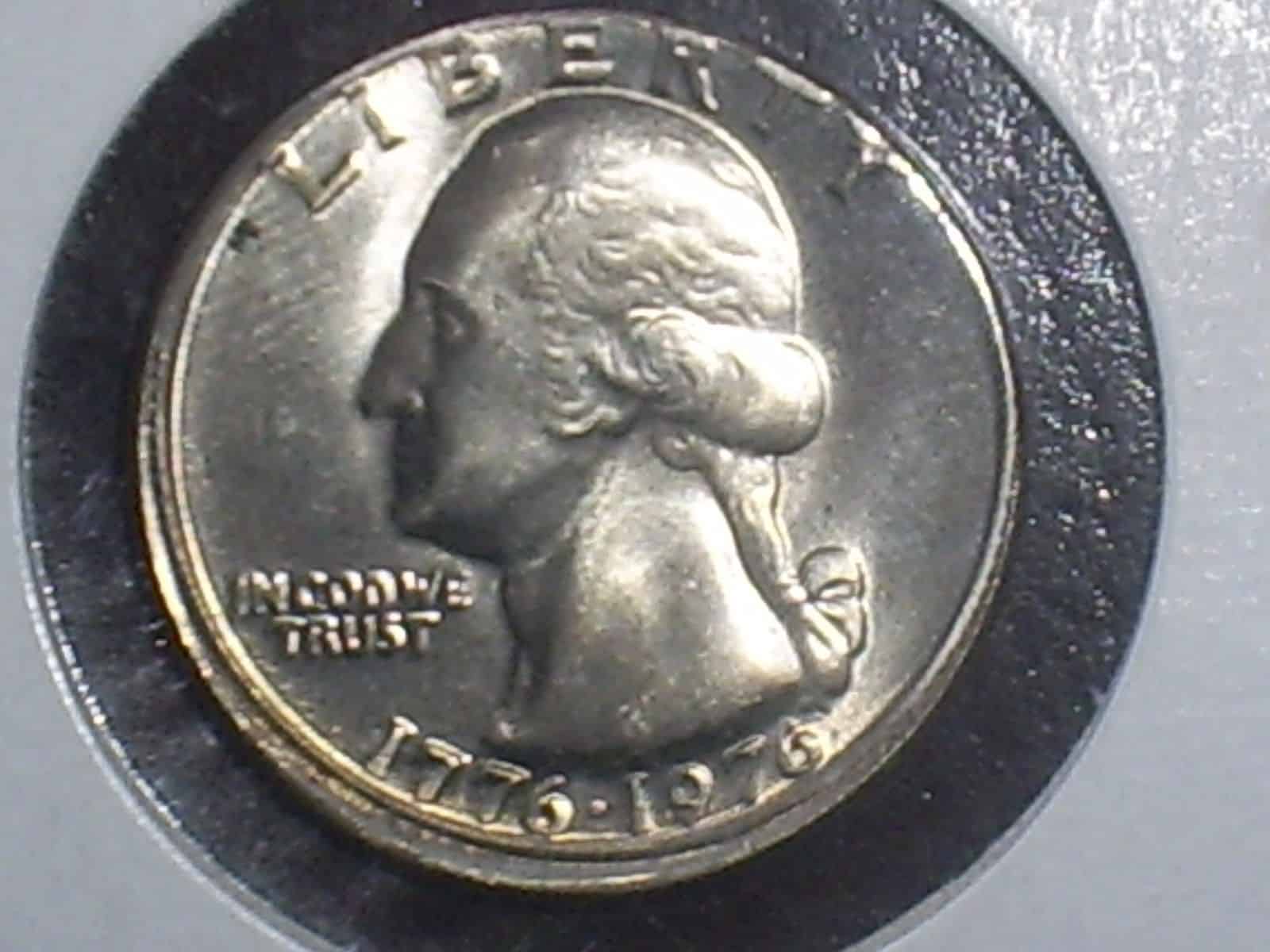
A coin that has been struck off-center has a partially-struck design. It can happen when a planchet is not properly placed in the striking chamber. This error usually makes a coin more valuable.
Generally, the higher the percentage by which the final design is off-center, the more visible and valuable the error. An NGC MS65 1776 quarter that was struck 10% off-center was sold for $138 at Heritage Auctions.
1776 Quarter Broadstruck
When a coin is struck without a collar, it doesn’t develop the required rim and edge. Instead, its metal spreads out to form a bigger coin with an irregular shape. This is what is called a broadstrike error.
But this term only applies when the full design appears on the coin and it’s centered. If the design isn’t centered, the error is known as an uncentered broadstrike. Either way, this kind of error increases the value of a coin.
For instance, an NGC MS65 1776 quarter that’s been broadstruck can sell for $65.
1776 Quarter Double Denomination
A double denomination coin appears when a coin’s design is struck on an already minted coin of another denomination. This coin usually features design elements from both denominations. This makes it valuable.
For instance, a 1776 quarter that has been struck over a proof dime can sell for around $12,000 at an auction. On the other hand, a 1776 clad S quarter struck on a red PF65 1969 S cent sold for $13,500 at a 2019 auction.
Interestingly, such coins are still valuable in lower mint states. For instance, a PCGS MS62 denomination coin that was made when a bicentennial quarter was struck on a 1976 dime sold for $9,200 at an auction.
1776 Quarter Struck-through
When a foreign object gets between a die and a planchet during striking, this makes an impression on the coin where the body got embedded on its surface. This is what is called a struck-through error.
When the foreign body is left on the coin after striking, the error is known as a retained struck-through, a strike-in, or an embedded struck-through. Whatever the case, this error increases a coin’s value.
An NGC MS66 1776 quarter struck-through on its obverse sold for $881 at Heritage Auctions.
1776 Quarter Double Struck
When a coin can’t leave the striking area after being struck, it can end up being struck a second time. This creates a double strike error. When the second strike is off-center, the error is more valuable.
It’s therefore not surprising that a PCGS MS62 1776 quarter with a 60% second strike that’s off-center sells for over $1,500 at an auction.
1776 Quarter FAQ
How much silver is in a 1776-1976 quarter?
Most 1776 quarters don’t contain any silver; only the special quarters minted in San Francisco for collectors have it. These contain 40% silver and 60% copper.
